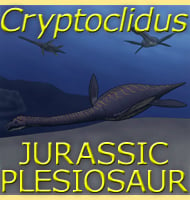In Depth
Palaeophonus is one of the oldest known scorpions but there is uncertainty as to if it was fully terrestrial. Although the body seems to have been adapted for life on land, the respiratory openings usually seen in terrestrial scorpions have so far gone unobserved in Palaeophonus. Despite this uncertainty Palaeophonus seems to have been well upon the path to the modern form. The telson (the spike in the end of tail) is already formed into a barb for the delivery of poison. Like with today’s scorpions, Palaeophonus would have seized prey in its pincers and then stung it to subdue it while it fed. The most likely prey types for Palaeophonus would have been other small invertebrates, but if it were aquatic, it may have also included fish and small (possibly juvenile stage) amphibians into its diet. In turn, Palaeophonus may have been prey to the larger amphibian or indeed reptilian predators of the Carboniferous. It is quite possible that larger predatory invertebrates of the time may have also preyed upon Palaeophonus.
Further Reading
- On some remarkable organisms of the Silurian and Devonian rocks in southern New Brunswick, G. F. Matthew - 1889.










